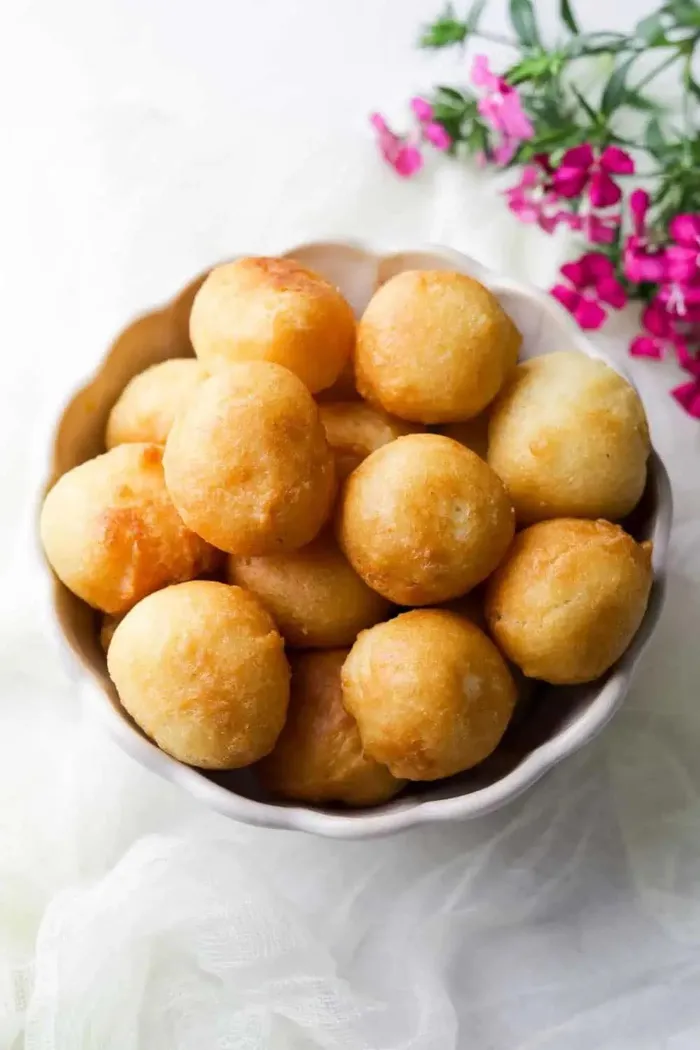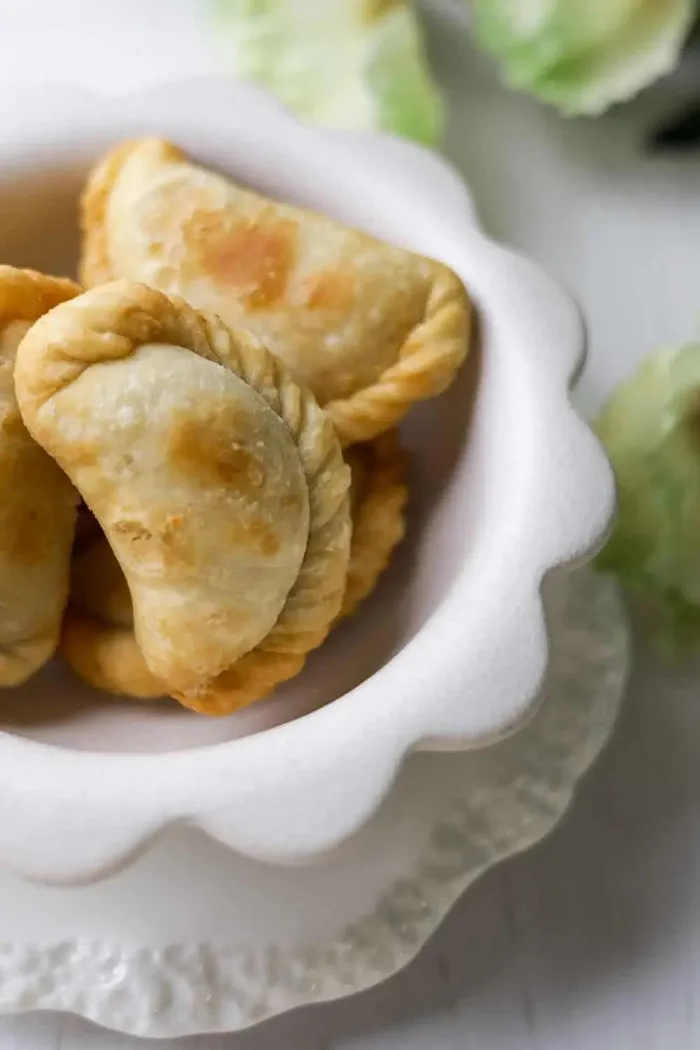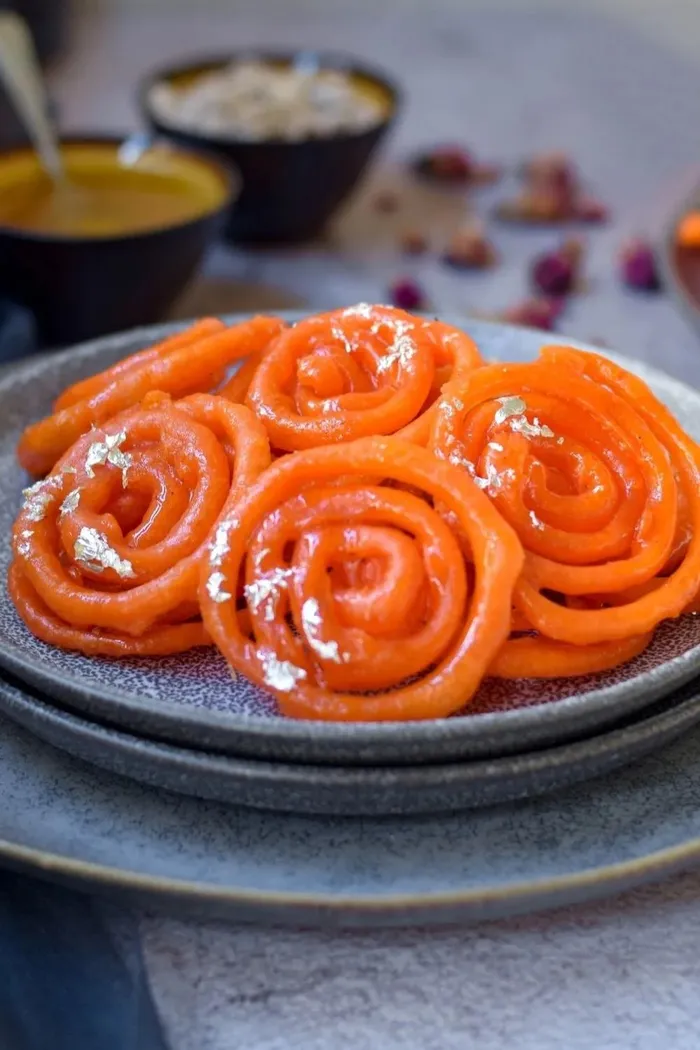Diwali recipes by Lorraine Maharaj
Gulgula, Poli and Jalebi

Easy Gulgula
Image: Supplied
Gulgula
1 1/2 cup self-raising flour (see note 1)
1 tsp baking powder
2 tbs desiccated coconut
1/3 cup sugar
1/2 tsp cardamom powder
1 tsp almond powder
1 1/4 cup cold milk (see note 2)
vegetable oil for frying
Method
Sift the self-raising flour and baking powder. Add the sugar, cardamom powder and almond powder and mix well. Slowly add in the milk (you may not require all of it) and use a whisk or your hands and beat the mixture until well combined. The batter will be thick and a little sticky.
Heat some oil in a pan on medium heat. You should have enough oil to immerse the gulgula batter. Take some of the batter, using your fingertips and drop it into the oil. Allow the batter to fry gently on a medium to low heat. Do not let it cook too quickly as the inside will not be fully cooked.
Use a fork and gently turn the gulgulas. It should be slightly brown when ready. Use a slotted spoon to remove them, ensuring all the oil is completely drained. Place in a paper towel lined dish to drain out the excess oil.
Note 1: I added a bit of baking powder because it gives the gulgulas a nice crisp exterior. If you want a more aerated, light gulgula, you can use 1 cup cake flour and 1/2 cup self-raising flour with a 1/2 teaspoon baking powder.
Note 2: The quantity of the milk is just a guideline. Remember weather and the season plays a huge role in the amount of liquid required. In summer flour is more wet so you will require less milk. In winter the flour is dry so you will require more milk. Cold milk also gives the gulgulas a crisp exterior.

Poli
Image: Supplied
Poli
125g butter
2 cups cake flour
1/2 cup cold milk, you may need more or a little less
1 cup dessicated coconut
1/2 cup sesame seeds
2 tsp elachie/cardamom powder
2 tbs almond powder
2 tbs flaked almonds
1/2 cup condensed milk depending on how sweet you prefer it
Method
Fry the coconut, almonds and sesame seeds in a pan, on low heat, until it turns slightly brown. Add the cardamom and almond powder, mix and add the condensed milk. Mix well and set aside.
For the pastry, rub the butter into the flour with your fingertips until it forms fine breadcrumbs. Pour the milk, a little at a time until the dough comes together. Do not overmix the dough. Remember you want a flaky pastry, so overhandling the dough will result in a stiff pastry.
Divide the dough into two portions. Roll out each portion of dough about 26cmx30cm, approximately 3mm thickness, and cut out round circles with a cookie cutter, 8cm will do.
Place a teaspoon of filling onto one side of each circle and fold it over, spread some of the flour paste on the edges of the circle. Bring the edges together and press it down with your fingertips. You can make a rope like design on the edge of the poli or you can press it with a fork. Fry the poli in hot oil over medium heat. Serve warm.

Jalebi
Image: Supplied
Jalebi
Syrup
3/4 cup granulated sugar
3/4 cup water
1/8 tsp saffron
1/4 tsp ground elachie/cardamom
1 tsp lemon juice
1 tsp egg yellow food colouring
Jalebi
1/2 cup cake wheat flour/all purpose flour
1/4 tsp bicarbonate of soda
1 tbs cornflour
3 tbs plain yogurt
1/4 cup water normal tap water
vegetable oil or ghee for frying
Method
Toast the saffron in a pan until fragrant. For the syrup, place the water and sugar in a pot. Allow it to simmer on a low heat until the sugar dissolves. Simmer until it reaches a one thread consistency. It will reduce to about half the amount. Add the food colouring, elachie, saffron and lemon juice to the syrup.
To test one thread consistency, take a little syrup and allow it to cool a little or you will burn. Place it between your forefinger and thumb and press and release, it will form one thread. If your syrup becomes too thick, you can add a little more water to fix it.
For the Jalebi, place the flour, bicarbonate of soda and cornflour in a bowl and mix it together. Make a well in the centre and add the yogurt. Add water, a little at a time (use only what's required) and whisk until you form a smooth batter. It must be a little thick, but free flowing. Whisk for at least 2 to 3 minutes.
Do not add all of the water as the batter may become too thin. If it does become thin, you can add a couple tablespoons of flour to thicken it. I used about 2 tablespoons short of a half cup of water.
Heat some oil on low heat in a flat pan. It is easier to work with a flat pan when piping the jalebi. Pour the batter into a piping bag or a squeeze bottle. Squeeze the batter into the oil in a circular motion to get a spiral shape. Fry about 3 to 4 at a time depending on the size of your pan.
Fry each side for at least one minute, on a low heat or the insides won't cook. Let the jalebi drain for a few seconds on a cooling rack. Dip in warm syrup, remove and drain on cooling rack.
Serve the jalebi warm or allow it to completely cool before storing in an airtight container. Jalebi is best made and eaten the same day.

Lorraine Maharaj
Image: File
Related Topics: